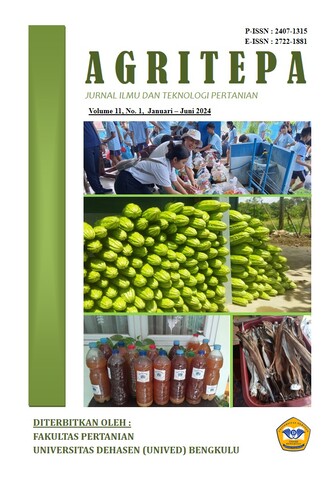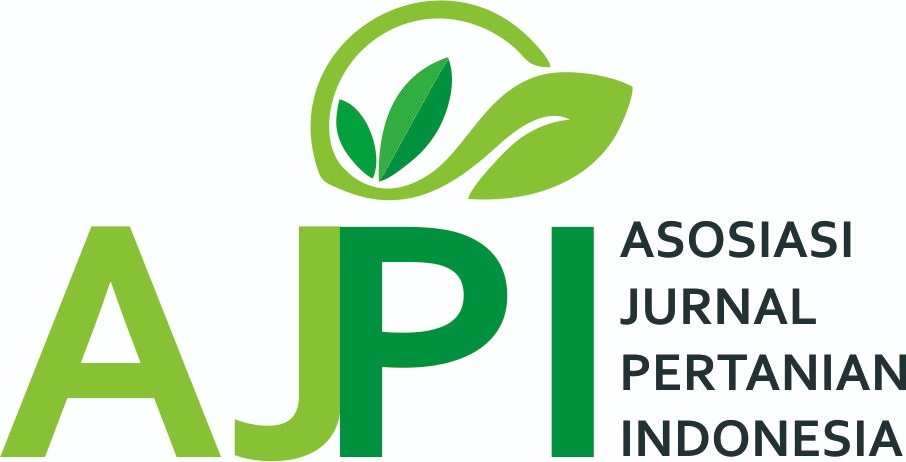Analysis of Added Value and Business Feasibility of Sago Tempe Chips Home Industry
Abstract
Purpose: This study aims to examine the added value and feasibility of the home industry producing tempeh sago chips in Bekasi. Methodology: The research employs both quantitative and qualitative descriptive methods to analyze the data. Results: The results indicate that the main reason for establishing the home industry of tempeh sago chips in Bekasi is to increase household income and create job opportunities for local residents. The added value obtained is an average of IDR 8,781.51/kg with an added value ratio of 19%, indicating a moderate level as it falls between 15% and 40%. The R/C Ratio is 1.53, where an R/C Ratio ≥ 1 is considered favorable. The Break-Even Point (BEP) for revenue is IDR 306,105.84, the BEP for production is 4.91 kg, and the BEP for price is IDR 40,817/kg. Findings: The study finds that the home industry of tempeh sago chips in Bekasi is viable and profitable, despite facing challenges such as the lack of bookkeeping practices. Novelty: This research provides new insights into the economic value addition and business feasibility of tempeh sago chips, highlighting the importance of proper financial management. Originality: The study presents a detailed analysis of the feasibility and value addition of tempeh sago chips, contributing to the understanding of small-scale food industries in Bekasi. Conclusions: The home industry of tempeh sago chips in Bekasi is feasible and profitable, making it a sustainable business venture. Type of Paper: Empirical Research Article
Downloads
References
Badan Pusat Statistik. (2019). Produksi Kedelai menurut Provinsi pada tahun 2014-2018. Kementerian Pertanian Republik Indonesia.
_______. (2019). Produksi, Luas Panen dan Produktivitas Palawija di Indonesia pada tahun 2014-2018. Kementerian Pertanian Republik Indonesia.
_______. (2022). Impor Kedelai menurut Negara Asal Utama pada tahun 2017-2021. Kementrian Keuangan (Ditjen Bea Dan Cukai).
Hayami, Y., Kawagoe, T., Morooka, Y., & Siregar, M. (1987). Agricultural Marketing and Processing in Upland Java A Perspective From A Sunda Village. CGPRT Centre. Bogor.
Joesyiana, K. (2018). Pengaruh Word of Mouth Terhadap Keputusan Pembelian Konsumen pada Media Online Shop Shopee di Pekanbaru (Survey pada Mahasiswa Semester VII Jurusan Pendidikan Akuntansi Fakultas Keguruan dan Ilmu Pendidikan Universitas Islam Riau). Valuta, 4(1).
Mar’atissholikhah, U., Darsono, & Nurjayanti, E. D. (2013). Analisis Nilai Tambah Industri Keripik Tempe Skala Rumah Tangga (Studi Kasus Desa Lerep Kecamatan Ungaran Barat Kabupaten Semarang). MEDIAGRO, 9(2), 24–35.
Nugrahadista, B. D. (2018). Analisis Nilai Tambah, Kelayakan Usaha dan Strategi Pengembangan pada UMKM Keripik Tempe Putra Ridhlo di Kota Malang. Skripsi. Fakultas Pertanian, Universitas Brawijaya. Malang.
Nugroho, F., Jamalludin, & Indrawanis, E. (2019). Analisis Agroindustri Keripik Tempe di Desa Sumber Datar Kecamatan Singingi Kabupaten Kuantan Singingi (Studi Kasus Pada Usaha Keripik Tempe Djokam). Jurnal Agri Sains, 3(02).
Purwanto, Y. A., & Weliana. (2018). Kualitas Tempe Kedelai pada Berbagai Suhu Penyimpanan. Warta IHP, 35(2), 106–112.
Setyawan, G., & Huda, S. (2022). Analisis pengaruh produksi kedelai, konsumsi kedelai, pendapatan per kapita, dan kurs terhadap impor kedelai di Indonesia. KINERJA: Jurnal Ekonomi Dan Manajemen, 19(2), 215–225.
Soekartawi. (2016). Analisis Usahatani. Penerbit Universitas Indonesia (UI-Press). Jakarta.
Sugiyono. (2016). Metode Penelitian Kuantitatif, Kualitatif, dan R&D. CV ALFABETA. Bandung.
Supriyati, & Suryani, E. (2006). Peranan, Peluang dan Kendala Pengembangan Agroindustri di Indonesia. Forum Penelitian Agro Ekonomi, 24(2), 92–106.
Suratiyah, K. (2006). Ilmu Usahatani. Penebar Swadaya. Yogyakarta.
Suwarta, Ilham, Muh. N., & Kiyona. (2022). Analisis Kelayakan Usaha, Efisiensi, Titik Impas dan Keuntungan Usaha Keripik Tempe Kedelai di Kampung Sanan Purwantoro Blimbing Malang,. Prosidia Widya Saintek, 01(01), 59–68.
Swagerry, G. (2020). Analisis Usaha dan Nilai Tambah pada Agroindustri Keripik Tempe di Dusun Sanan, Kelurahan Purwantoro, Kecamatan Blimbing, Kota Malang. Skripsi. Fakultas Pertanian, Universitas Katolik Widya Karya Malang. Malang.
Copyright (c) 2024 Andini Afifah, Abubakar Abubakar, Muhamad Rom Ali Fikri (Author)

This work is licensed under a Creative Commons Attribution-ShareAlike 4.0 International License.
Author retains the copyright and grants the journal the right of first publication of the work simultaneously licensed under the Creative Commons Attribution-ShareAlike 4.0 License that allows others to share the work with an acknowledgement of the work's authorship and initial publication in this journal













